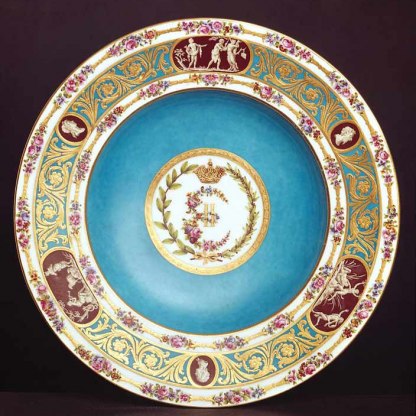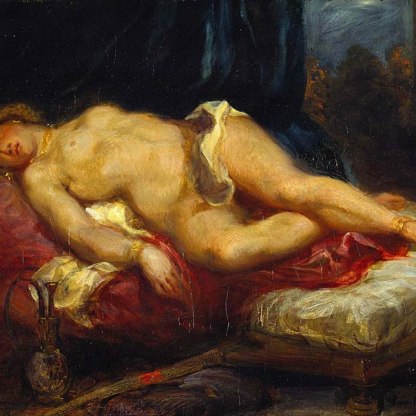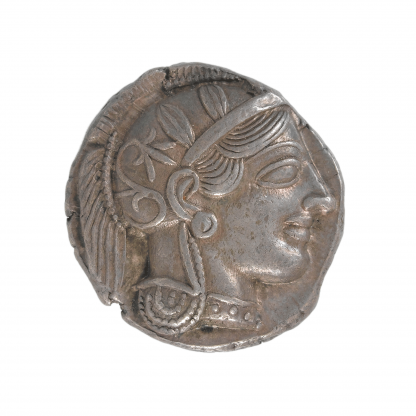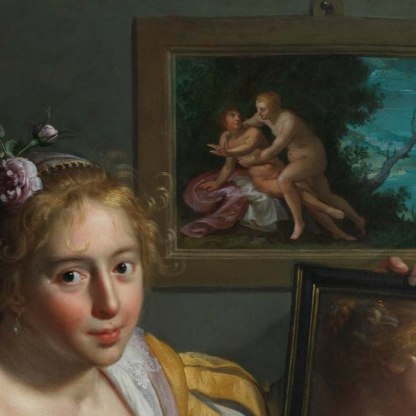Isabella D'Este
Isabella was the daughter of the duke and duchess of Ferrara. In 1490, aged sixteen, she married Gianfrancesco Gonzaga II, the marquis of Mantua. Growing up in Ferrara, home to one of the most cultivated Italian courts at the end of the fifteenth century, she received an excellent classical education, and her adult life was characterised by a love of learning. Her cultural interests were broad, encompassing literature, music, sculpture and painting. Most of the leading artists of the time benefited from her patronage and enthusiasm. There are surviving portraits of her by Leonardo da Vinci and Titian.
Perhaps her most famous commission was for a series of paintings for her studiolo (private study) in her palace at Mantua. These were all based – like this plate – on classical myths, and included work by the great Mantuan artist Andrea Mantegna. It was an unusual act of patronage in a period when women tended to collect only religious works.
Isabella's fastidiousness as a patron is clear from a series of over seventy letters to the painter Perugino, written over a ten-year period, in which she gives precise and detailed instructions as to how her pictures are to appear. She makes it clear that the artist is not expected to exercise his own imagination. It is perhaps for this reason that the great Venetian painter Giovanni Bellini ultimately declined to paint pictures for her collection. After her husband's death, Isabella continued to collect and commission art, and Correggio is known to have completed two works for a new studiolo.
Isabella was also a passionate collector of antiquities, and kept a grotto of classical sculptures in her palace. Her methods of acquisition were not, however, always the most honourable. She is known to have received stolen works and, more regrettably, to have bartered mercilessly with the dying Mantegna for an antique head.
Other highlight objects you might like
Other pathways and stories you might like
Sign up to our emails
Be the first to hear about our news, exhibitions, events and more…






